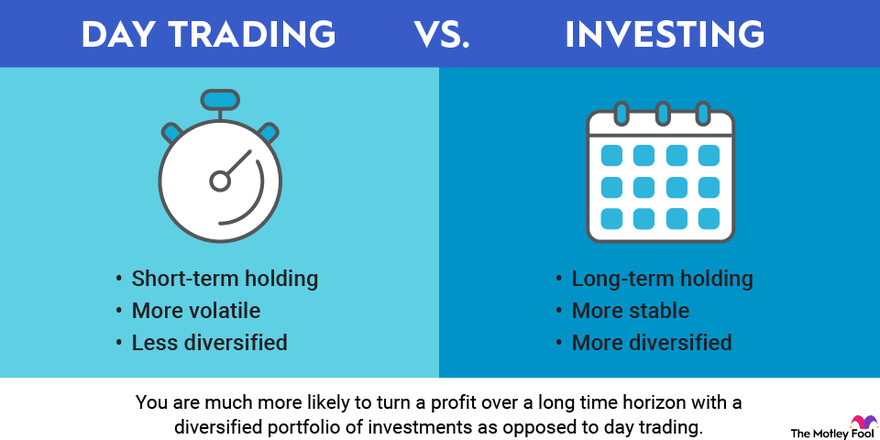Did you know that not paying your taxes can be more stressful than trying to day trade during a market crash? As a day trader, understanding your tax obligations is crucial to avoid surprises at tax time. In this article, we delve into the ins and outs of estimated taxes for day traders. We’ll explore whether you need to pay them, how they work, and when payments are due. We’ll also cover penalties for non-payment, calculations for estimated taxes, and special considerations for part-time traders and those with losses. Plus, we'll discuss the impact of trading income on your tax obligations, the role of wash sales, and the benefits of timely payments. With insights from DayTradingBusiness, you'll have the clarity needed to navigate the tax landscape with ease.
Do Day Traders Need to Pay Estimated Taxes?
Yes, day traders need to pay estimated taxes if they expect to owe $1,000 or more in taxes after subtracting withholding and refundable credits. The IRS considers active trading as a business, so income from day trading is taxable and requires quarterly estimated tax payments to avoid penalties.
How Do Estimated Taxes Work for Day Traders?
Yes, day traders typically need to pay estimated taxes if they expect to owe $1,000 or more in taxes after withholding and credits. They must estimate their quarterly income and expenses, then submit payments using IRS Form 1040-ES. Because day trading profits are considered self-employment income, taxes are due quarterly, and failing to pay can lead to penalties. Accurate record-keeping of trades and profits is essential to determine the correct estimated tax amounts.
When Are Estimated Tax Payments Due for Day Traders?
Estimated tax payments for day traders are due quarterly: April 15, June 15, September 15, and January 15 of the following year.
What Are the Penalties for Not Paying Estimated Taxes?
If you don't pay estimated taxes as a day trader, you'll face penalties and interest on the underpaid amount. The IRS charges quarterly estimated tax penalties based on the amount and timing of underpayment. These penalties can add up quickly if you consistently miss payments or underpay significantly. In addition, unpaid taxes could lead to a tax lien, wage garnishment, or other collection actions. To avoid penalties, it's crucial to calculate and pay estimated taxes on time, especially if trading generates substantial income.
How Can Day Traders Calculate Their Estimated Taxes?
Day traders can estimate taxes by tracking their gains and losses daily, using IRS Schedule C or 6781 for Section 1256 contracts, and applying the appropriate tax rates. They should set aside a percentage of their trading profits—usually around 25-30%—to cover federal tax obligations. Quarterly estimated tax payments are made using IRS Form 1040-ES, based on their projected annual income. Keeping detailed records of all trades and consulting a tax professional helps ensure accurate calculations and timely payments.
Are Estimated Taxes Required for Part-Time Day Traders?

Yes, part-time day traders must pay estimated taxes if they expect to owe $1,000 or more in taxes after subtracting withholding and refundable credits.
Do You Need to Pay Estimated Taxes if You Have Losses?
No, you generally don’t need to pay estimated taxes if your trading losses offset your income, reducing your taxable income to zero. However, if you have other income sources or your losses are not enough to eliminate your tax liability, you might still need to make estimated payments. Always check current IRS rules and consult a tax professional for your specific situation.
How Does Trading Income Affect Your Tax Obligations?
Trading income increases your taxable income, which can raise your overall tax bill. If you earn significant profits from day trading, you may need to pay estimated taxes quarterly to avoid penalties. The IRS considers day trading as a business if it's your primary source of income, making estimated tax payments essential. Failing to pay enough through withholding or estimated taxes can result in penalties and interest. Keep track of your trading gains and losses to determine if you must make estimated payments.
Can You Avoid Estimated Taxes as a Day Trader?

No, as a day trader, you generally cannot avoid paying estimated taxes. The IRS requires traders who expect to owe at least $1,000 in taxes after withholding to make quarterly estimated payments. Since day trading often results in substantial taxable income, failing to pay estimated taxes can lead to penalties and interest.
What Forms Do Day Traders Use to Pay Estimated Taxes?
Day traders pay estimated taxes using IRS Form 1040-ES quarterly. They estimate income from trading profits and file these forms four times a year to cover taxes owed.
How Do Wash Sales Impact Estimated Tax Payments?
Wash sales don’t directly affect your estimated tax payments, but they can impact your reported gains and losses. If wash sales cause you to defer or adjust losses, your taxable income might seem lower or higher, influencing how much you owe in estimated taxes. As a day trader, you need to pay estimated taxes based on your expected net income, and wash sales can alter your net gains or losses, affecting your calculations. Keep track of wash sales because they can change your taxable income and thus your estimated tax obligations.
Are There Special Tax Rules for Pattern Day Traders?
Yes, pattern day traders must pay estimated taxes if they generate enough taxable income from frequent trading. The IRS considers day trading income as regular income, requiring quarterly estimated tax payments to avoid penalties. If your trading results in substantial profits, you’ll need to make these payments just like any other self-employed or business income.
Learn about Are There Special Tax Rules for Forex or Crypto Day Trading?
What Deductions Are Available for Day Traders?
Day traders can deduct expenses like trading software, data feeds, internet costs, home office expenses, education, and travel related to trading. They can also deduct commissions and fees, and if they qualify as traders, they may write off a portion of their home office as a business expense. However, they cannot deduct personal expenses or losses outside their trading activity.
How Does Mark-to-Market Accounting Change Tax Payments?
Mark-to-market accounting turns unrealized gains and losses into taxable income at year-end. For day traders using this method, they pay taxes on all gains regardless of actual cash received. This often increases annual tax liability, requiring more frequent estimated tax payments. Without mark-to-market, traders only pay taxes when they realize profits by closing positions.
What Are the Benefits of Paying Estimated Taxes on Time?
Paying estimated taxes on time helps you avoid penalties, reduces interest charges, and keeps your tax obligations manageable. It ensures you stay compliant with IRS rules, preventing surprises at tax time. Timely payments help you avoid large, unexpected bills and keep your financial records clean, especially important if you're a day trader with fluctuating income.
Conclusion about Do You Need to Pay Estimated Taxes as a Day Trader?

In summary, understanding estimated taxes is crucial for day traders to maintain compliance and avoid penalties. Day traders must assess their income, calculate potential tax liabilities, and make timely payments to the IRS, regardless of whether they operate full-time or part-time. Even with losses, estimated tax obligations remain, and utilizing the right forms and deductions can optimize tax outcomes. For tailored advice and in-depth insights, DayTradingBusiness is here to support your trading journey and ensure your tax strategies are on point.